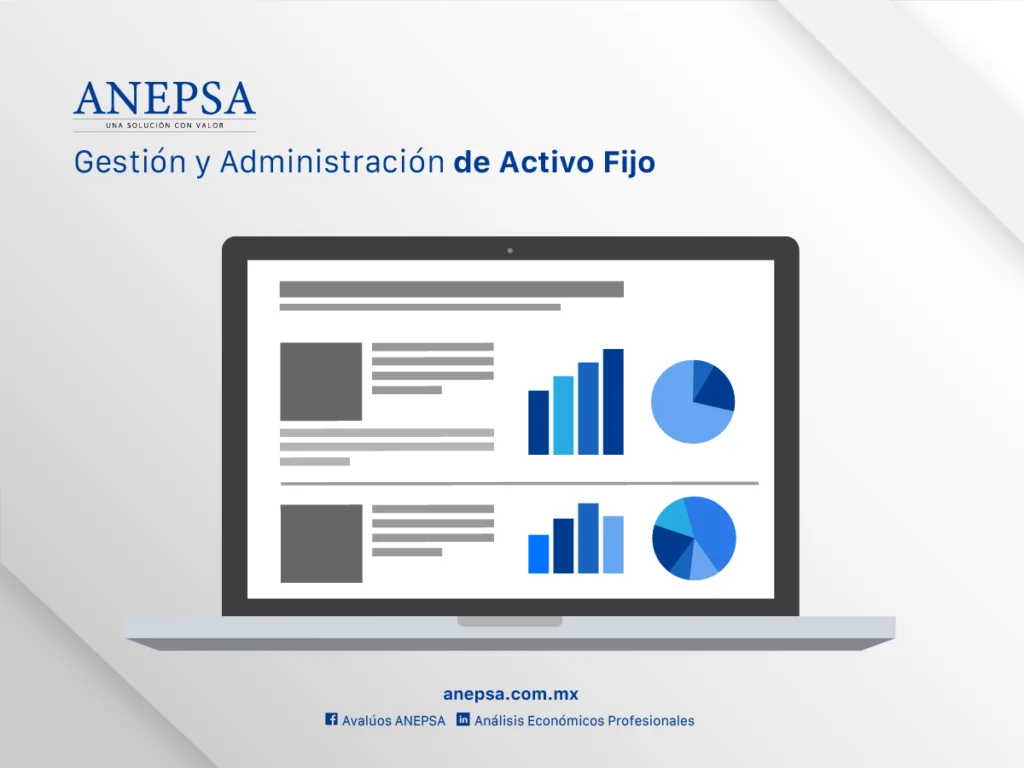Fixed Asset Management

What is Fixed Asset Management, and why is it really important for your company?
The Management and/or Administration of Fixed Assets is a methodological process, whose main objective is to have a qualitative and quantitative database. of each of the fixed assets belonging to an economic entity, company and/or person, accurately and reliably based on the following steps:
- Informative Survey of the Asset and Physical Inspection
- Creation of the accounting list with documentary support
- Reconciliation of physical inventory - accounting
That is, it is the sequence of steps that seeks to know the specific details, both in physical and accounting characteristics of each movable or immovable asset, of an entity for its control.
It is of vital importance for companies to manage and administer their fixed assets in a way that allows them to have information about the past and present of it, in order to plan a better future in the investments they make in the short or long term. term.
Similarly, good management can help avoid unnecessary or unplanned expenses. For example: if the personnel cannot locate a certain asset or the company did not have the necessary information about it and it is in poor condition, it will be necessary to replace it.
As your company grows in value, it grows in fixed assets. Having the optimal administration of these, optimizes your company, leaving you time to do more business with your business, for updates by national or international regulations. To achieve this, you must make an effective inventory through a layout that allows you to know in detail the status, characteristics and location of your assets; the success of the inventory lies in its planning and execution.
Good planning contemplates human elements (having the number of properly trained personnel such as responsible supervisors and capturers) and non-human elements (strategy, inventory equipment such as scanners, barcode label printers, and appropriate software).
It is advisable that there be a documentation process on the policies and procedures for the purchase, sale, maintenance, registration, improvements, cancellations and transfers of the company's fixed assets, in which periodic updates are also available. As well as establishing internal administration mechanisms to always know the real existence of the fixed asset and that this information can be collated in an accounting manner at any time. These points are very convenient to achieve proper management and administration of fixed assets.
What Fixed Assets can be controlled?
Let us understand by Fixed Assets the tangible assets whose purpose is the use or enjoyment of them for the benefit of the entity, the provision of services and are acquired with the purpose of not selling them in the normal course of the operation.
The classes that comprise them are:
- Lands: All land owned by the company
- In progress constructions.
- Own buildings: All types of real estate owned by the company such as buildings, apartments, etc.
- Facilities and improvements to leased properties.
- Machinery and equipment: All machinery, industrial vehicles, and tools necessary for the daily operation of the company.
- Operating equipment.
- Furniture and fixtures.
- Computer equipment.
- Transportation equipment: All means of transportation owned by the company that are used for people or livestock.
- Controllable equipment.
- Leased equipment.
Stages for the Management and Administration of Fixed Assets
Informative Survey of the Asset and Physical Inspection
Carried out at each of the company's locations where there are fixed assets that can be managed.
Creation of the accounting list with documentary support
Creation of an analytical base starting from the accounting base of the fixed assets that your company has registered, enriching it with information on invoices, purchase orders and any documentary support that they may have related to the acquisition of each of the registered fixed assets.
Reconciliation of physical inventory - accounting
Creation of an analytical base that contains the reconciliation of the fixed assets registered in accounting against the registered physical inventory, taking as a starting point the information generated in the aforementioned stages; generating an executive report that contains the detailed information of the located and non-located assets, both accounting and physical.



Importance of Fixed Asset Management
Each asset should have its unique identification that physically distinguishes it from the others. We can then ask ourselves:
- Do the Fixed Assets individually have any physical identification?
- What is the physical state of these assets? Are they in use or damaged?
- Can assets be easily written off?
- Are they backed by a maintenance contract or within a warranty? Remember that we may be paying taxes for goods that we do not have or that are not already in use in the company.
- Are changes in the location of Fixed Assets reported?
- Is the exact physical location of each asset known?
- Is it known what assets each user has, and if they are responsible for them?
- Does your company have policies on the Control of Fixed Assets?
It is essential that as a representative of a company you take into account that it is worth working on a good fixed asset management and administration system, as this translates into financial, fiscal and production improvements. Knowing how to manage the resources that your company already has is a strategy that will allow you to make the most of them, gives short-term results and lasts for a long time.
Carried out through the diagnosis of the current situation of the fixed assets owned and your company, our advice includes the following activities:
- In the development of our studies of fixed assets, we identify the assets, grouping them by cash-generating unit, which is the basis for the application of the Bulletin C-15 Impairment of Long-Term Assets and we involve the segregation of fixed assets by components for the application of the NIF C-6 Property, Plant and Equipment.
- We can also support or provide support as Outsourcing to establish quality controls both through continuous monitoring, as well as through the creation of the Fixed Asset Control Policies Manual.
Some customers of this service










